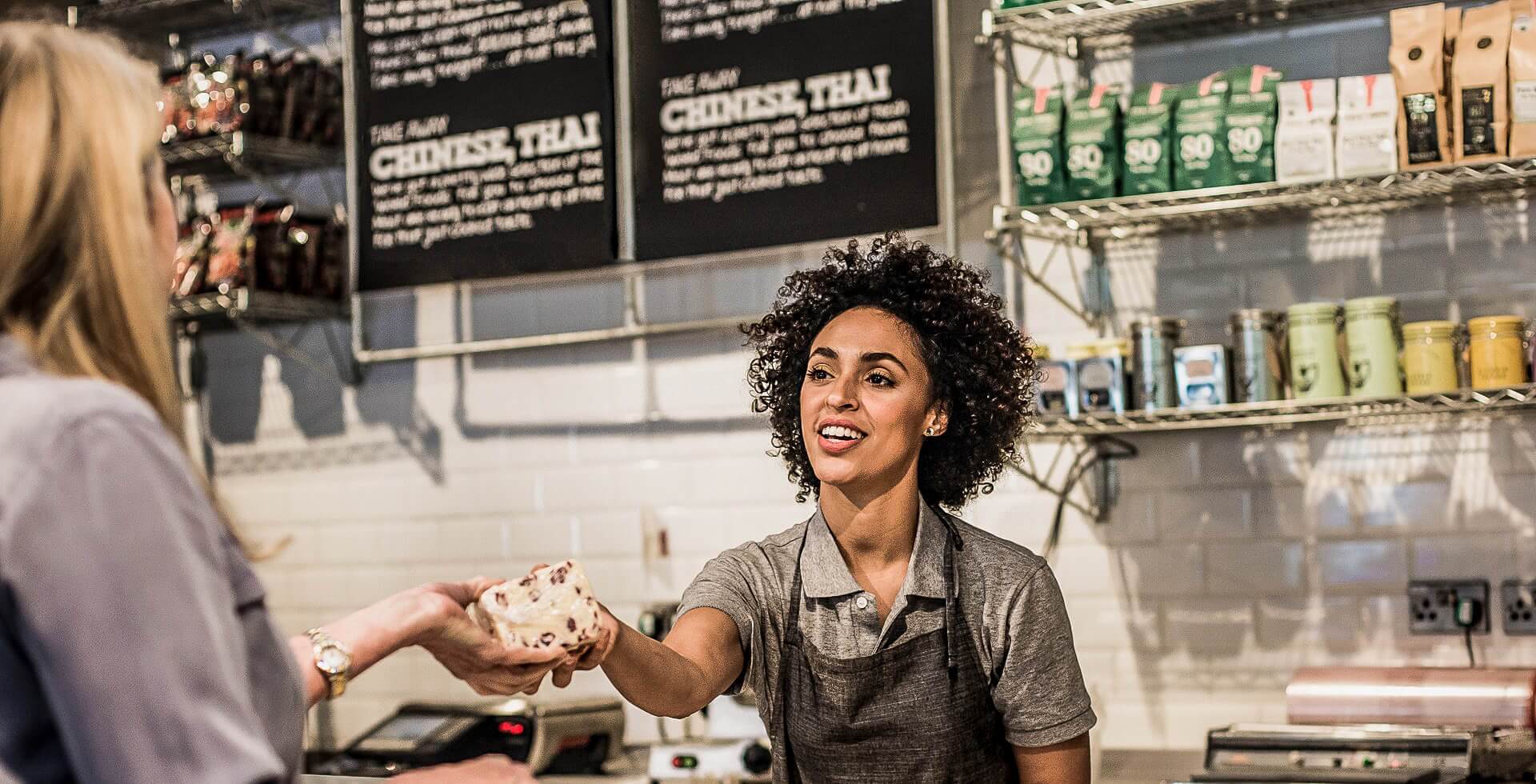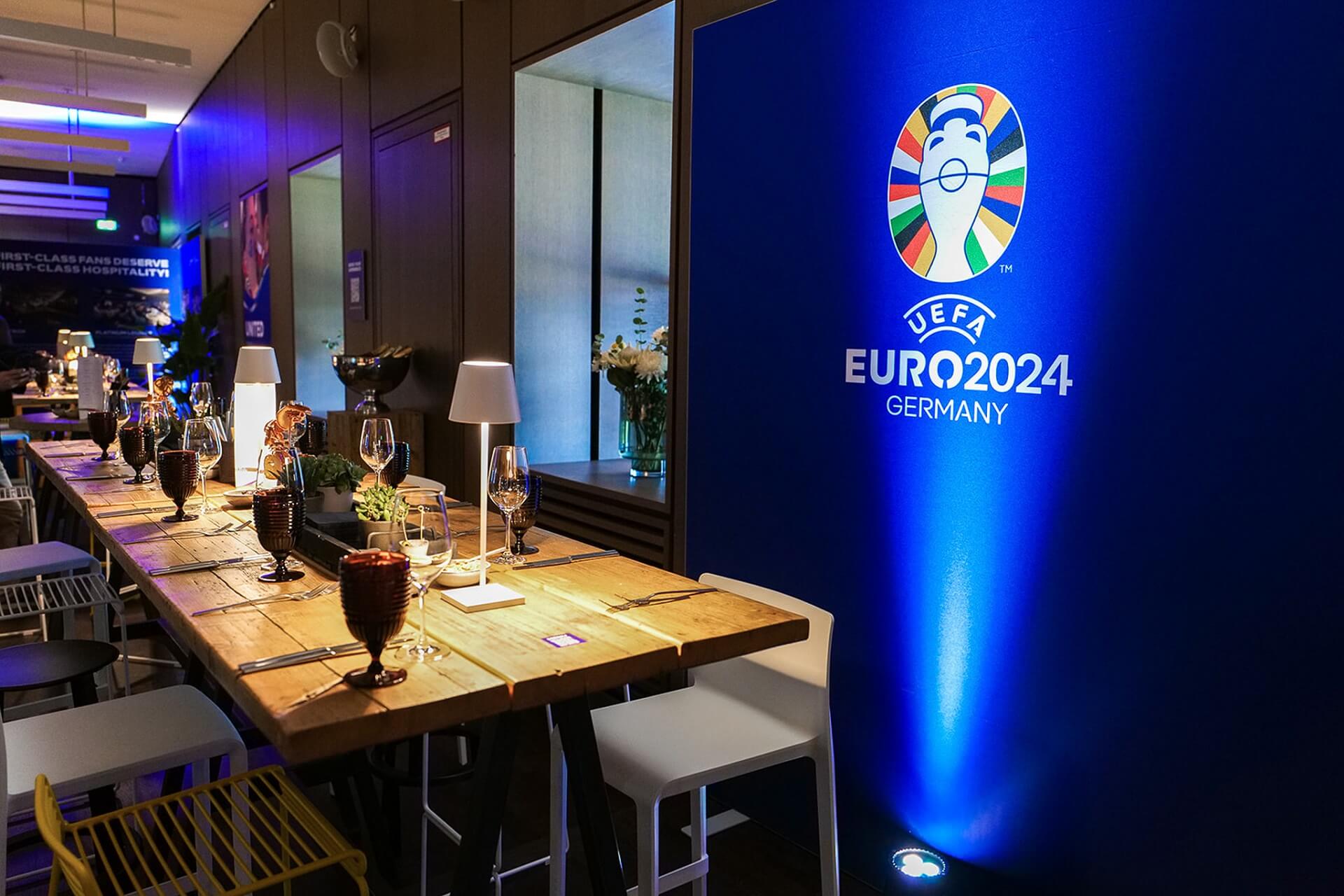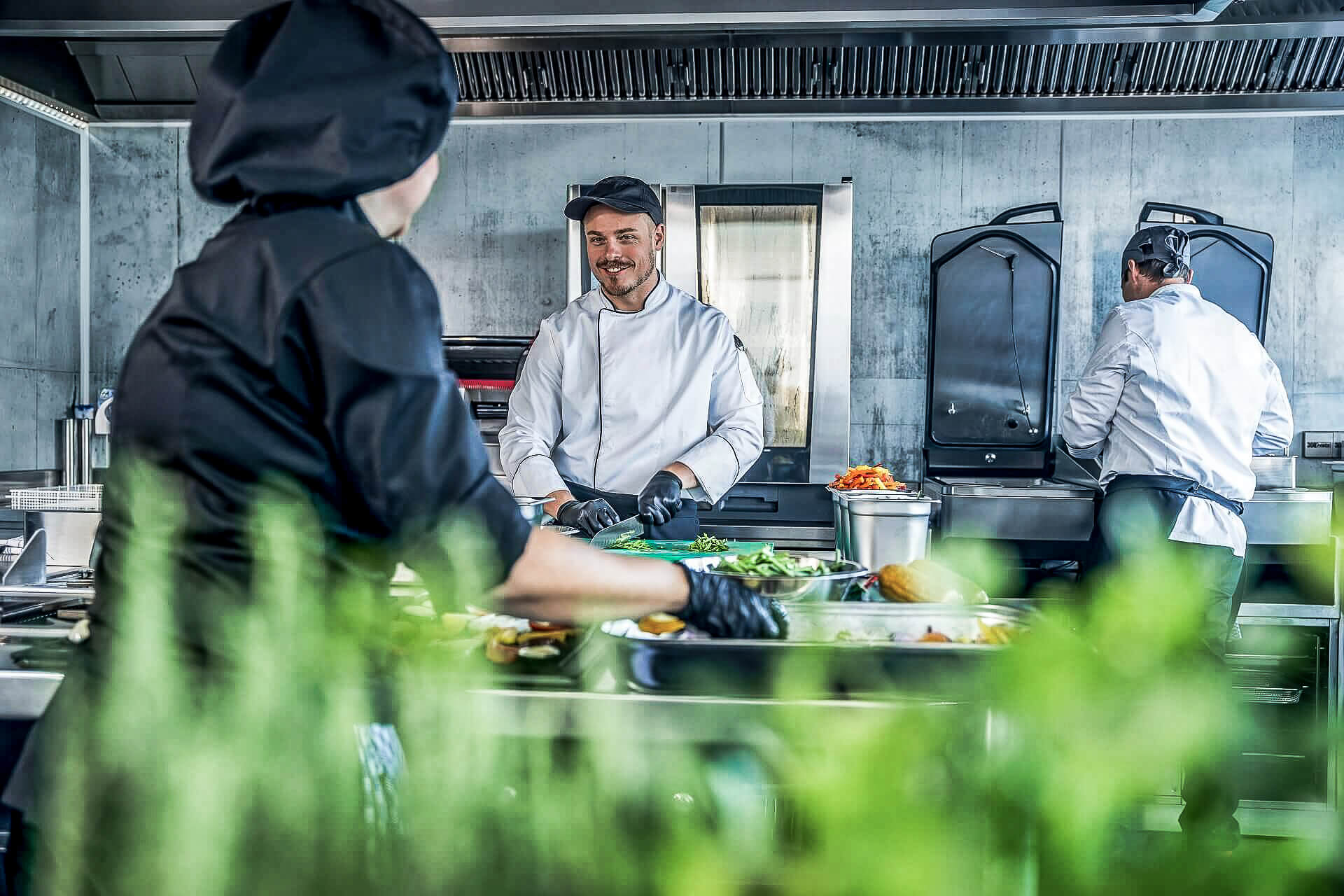If you had to divide the world of food into two, this is the best way to do it: There’s gastronomy – and then there’s the supermarket. In gastronomy, your food is served, and in the supermarket, you buy food and cook it yourself at home. It’s that simple – at least in theory. In the “new” reality of our time, as always, things are a little more complicated. Supermarkets and gastronomy have been growing ever closer together for several years now. But how exactly? And why?
Spending says: Better a restaurant than a supermarket
The fact that retail and especially supermarkets integrate certain elements of gastronomy into their locations is nothing new in itself. In the early 2000s, hot food counters, where people could order food to go, were already commonplace around the entrances and exits of many supermarkets. However, at the beginning of the 2010s, large supermarket chains were increasingly looking for new ways to position themselves successfully in the competitive grocery store market.
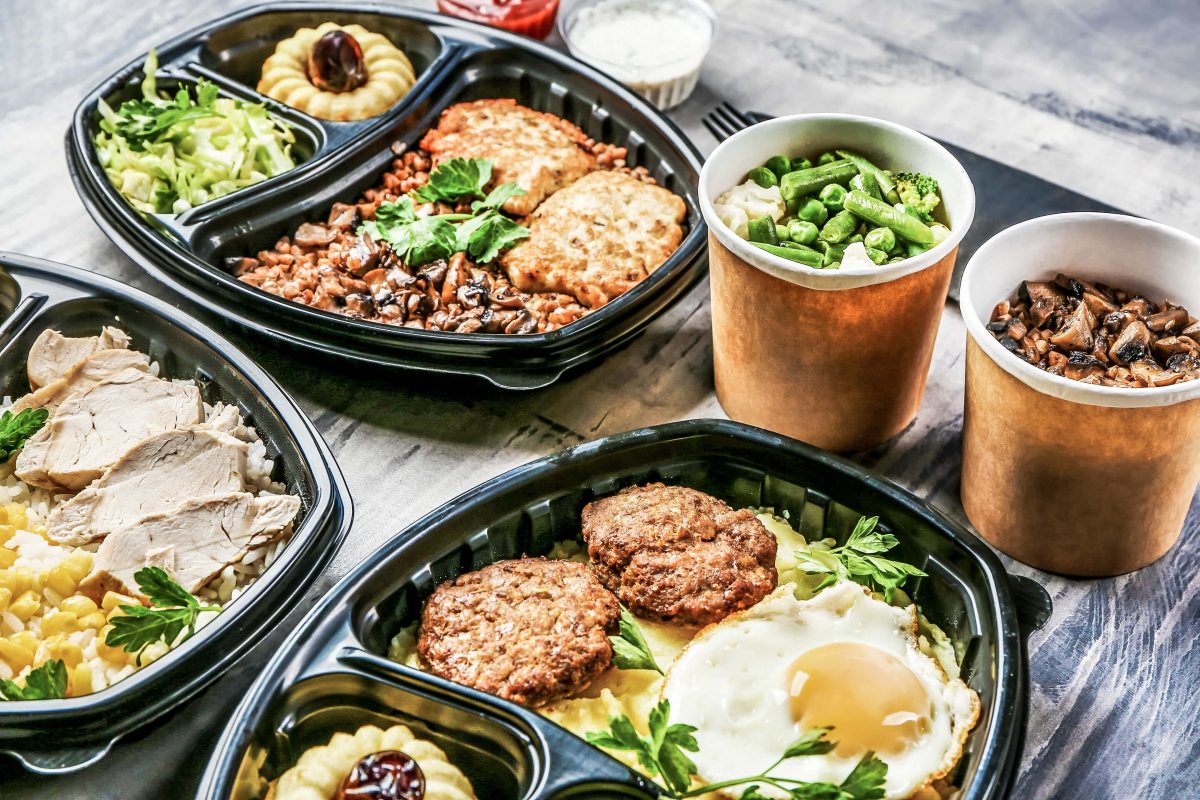
Image: AdobeStock | Pixel-Shot
Why? Because many established supermarkets suffered a sudden drop in sales due to the success of discounters, which have scored points with consumers over the past 20 years by offering their own line of organic products and private labels. Another reason is that people’s consumption behavior with regard to food has been undergoing ever greater change. According to the United States Census Bureau, the leading US statistical agency, people have been spending more money on eating out than on groceries at the supermarket over the past five years.
With a short – understandable – interruption during the Corona pandemic, this trend continues to intensify today: In February 2023, foodservice spending across the US amounted to 95 billion dollars, compared to 72 billion dollars for grocery shopping in supermarkets. This is why the solution is obvious for many established supermarket groups: Supermarkets need to be more than just places to shop for food. They must become places where people meet, where they can have an experience. How can this be done? Exactly. With supermarket gastronomy.
Michelin-starred cuisine, fast food or something completely different?
Sometimes it’s a three-star restaurant, like the legendary Chef’s Table at Brooklyn Fare, located inconspicuously behind a small supermarket in the middle of New York City. Opened in 2016, chef Cesar Ramirez has created a culinary universe that has nothing to do with the supermarket in front of it.
Sieh dir diesen Beitrag auf Instagram an
Except both are owned by the same person: Moe Issa, the founder of Brooklyn Fare supermarkets, who holds the two worlds together, at least commercially. In other words, because his supermarkets are doing so well, he now has the luxury of treating himself to one of the best restaurants in the world, where it is almost impossible for mere mortals to get a seat. Simply put, Moe Issa doesn’t really need a restaurant for his supermarkets to work. However, the same is not true from the major supermarket chains both in and outside the USA.
A look at the big players in the US supermarket industry shows that this trend has gained considerable momentum over the past five years. But unfortunately, it’s not as simple as it sounds. Simply put a restaurant next to the supermarket building? That would be nice. However, it takes more than that. Supermarket giant Walmart knows how to play the game.

Image: AdobeStock | mavoimages
It has had a business partnership with McDonalds for over 30 years. The business model worked great: People went to the fast food giant before or after shopping at Walmart. As a result, they looked forward to shopping at Walmart all the more. A win-win situation for both parties. However, the last few years have taken their toll on this partnership, which had proved very successful up to that point. This challenge came from online retail, the trend towards drive-thru fast food chains, discounter competition, not to mention the coronavirus pandemic. Of the roughly 1,000 McDonalds stores that were leased by Walmart supermarkets at their peak, just 150 remained by 2021. So what’s the next step? Walmart management’s answer to this question was quite ambitious, not to mention innovative: ghost kitchens.
Ghost kitchens as a recipe for success for supermarket gastronomy?
Now, where the trusty McDonald’s counter used to be, Walmart customers – at a Walmart store in Rochester, New York, for example – simply find a counter. The name of the company – surprise! – is “Ghost Kitchens”. Customers can order dishes from over twenty (!) food concepts and time this order via an app so that the dish is served on time after shopping.
Saladworks, Big Chicken, Nathan’s Famous, Wow Bao – the most popular dishes of many US hit brands provide Walmart shoppers with a satisfying choice of culinary options. With success: After the Rochester site, the concept expanded to California, Texas, Illinois and Georgia. And this despite the fact that there’s no seating, let alone service, for the meal. Apparently, the uncomplicated luxury of a huge selection of comfort food certainly seems to be what the supermarket gastronomy customer of tomorrow needs. At least at Walmart.
Supermarket gastronomy as a private label
The situation is different for Kroger, the other supermarket giant in the USA. In 2019, it opened a two-story store in Cincinnati – everything is bigger in America, after all – and integrated a food court there right away.
Sieh dir diesen Beitrag auf Instagram an
This food court includes its new restaurant brand, Kitchen 1883. Under the motto “rustic relaxation”, the restaurant serves fresh cuisine there at moderate prices, and also has a cocktail bar. From braised cauliflower with chili sauce, spring onions and sesame topping to savory shrimp cocktail and crispy shishito peppers with aji amarillo sauce, just a few dishes cost over ten dollars. So far, customers seem to love it. In the meantime, Kroger has brought its Kitchen 1883 concept to two other stores. By doing so, it shows the competition that investing in a gastronomic private label –extending beyond ghost kitchens and fast food – can be worthwhile.
Is there a recipe for success for supermarket gastronomy?
Is this trend, which is spreading from America to European supermarkets, becoming a problem for gastronomy beyond the large supermarket chains? It may be too early to make a reliable prediction, but it doesn’t look like this will be the case. Sure, large supermarket complexes with their own food court, often located in suburban areas, could very well put a strain on urban gastronomy in the foreseeable future.
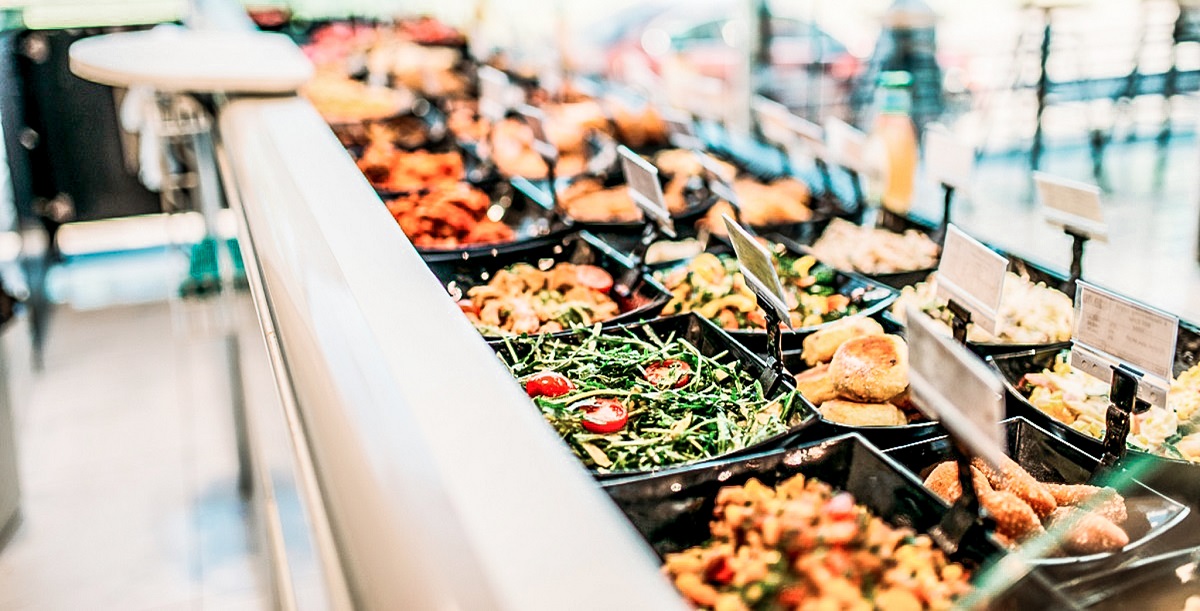
Image: AdobeStock | Nomad_Soul
However, the majority of the supermarkets’ gastronomic offerings have so far taken place without a food court. And whether in the form of ghost kitchens or gastronomic private labels, such restaurants predominantly count supermarket customers as guests – and not people outside the supermarket sector. Even concepts such as the comparatively sophisticated Kitchen 1883 are not spectacular enough. What’s more, supermarket gastronomy is still in its infancy.
The different approaches of the large supermarket chains clearly show this. Ghost kitchens with comfort food? A restaurant as a private label? Anyway, which restaurant concept works for such a diverse clientele as supermarket customers in the long term? These are all questions that the large supermarket groups are only slowly beginning to address. In the meantime, traditional gastronomy is doing a good job of remembering its core competence: To be a place away from everyday hustle and bustle, a place where guests have an enjoyable experience time and are served good food with attentive service. No shopping bags required.




